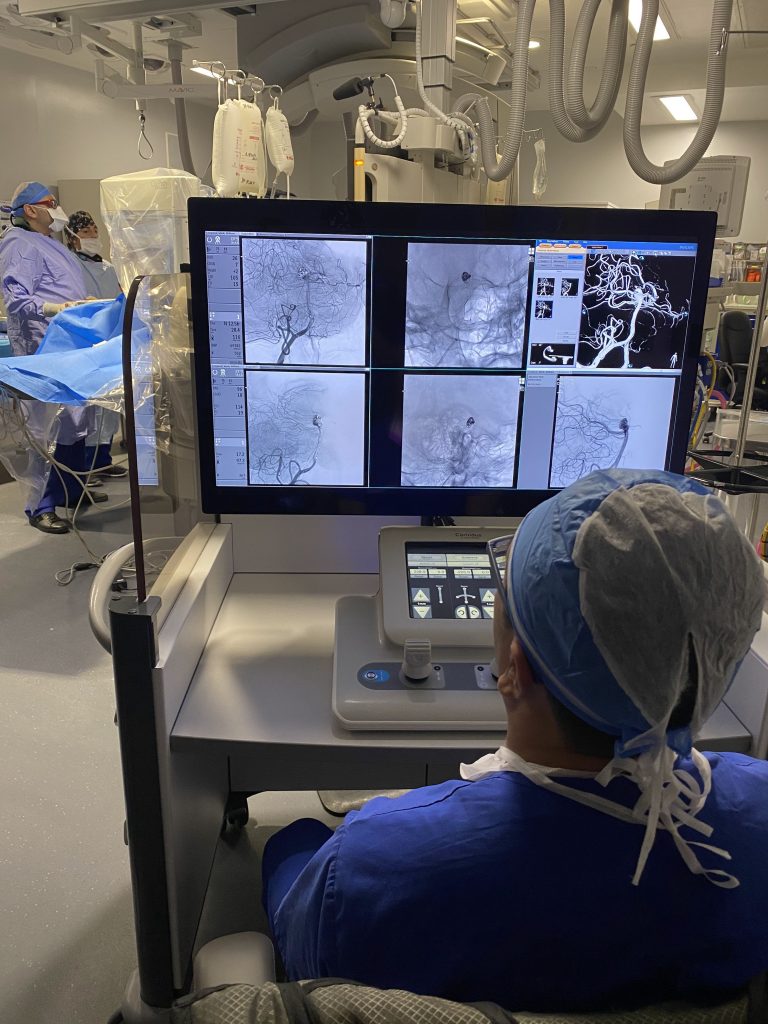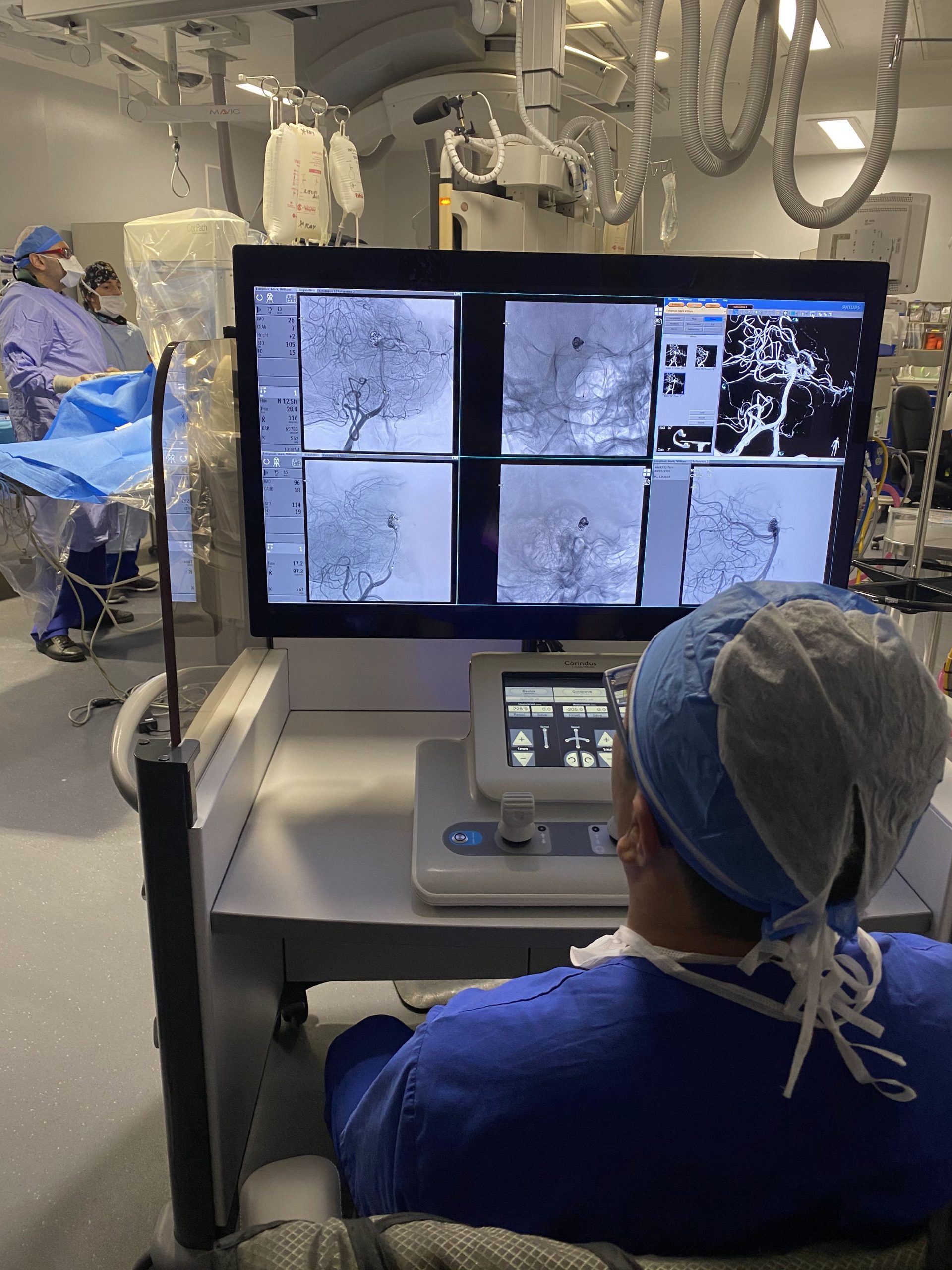Canadian researchers have successfully used a robot to treat a 64-year-old female patient with an unruptured aneurysm at the base of her skull. A brain aneurysm is a bulge or ballooning in a blood vessel in the brain.
The surgical team from the Toronto Western Hospital and University of Toronto used the robot to place a stent and then, using the same microcatheter, entered the aneurysm sac and secured the aneurysm by placing various coils.
The researchers used the robotic arm to perform all intracranial steps. Since this first case, the team has successfully performed five additional aneurysm treatments using the robot, which included deploying various devices such as flow-diverting stents.
The researchers believe that this robotic system could eventually allow remote surgery, enabling surgeons to treat strokes from afar.
An aneurysm occurs when part of an artery wall weakens, allowing it to widen abnormally. The causes of aneurysms are sometimes unknown. Some may be congenital, meaning a person is born with them. Aortic disease or an injury may also cause an aneurysm.
A family history of aneurysm may increase your risk for developing an aneurysm. Other risk factors include high blood pressure, high cholesterol and smoking, according to the American Heart Association, Inc..
Robotic technology is typically used in surgery and cardiology, but not for brain vascular procedures. “This experience is the first step towards achieving our vision of remote neurovascular procedures,” said lead researcher Vitor Mendes Pereira — a neurosurgeon and neuroradiologist at the Toronto Western Hospital, and professor of medical imaging and surgery at the University of Toronto in Canada, in a Feb. 21 release. “The ability to robotically perform intracranial aneurysm treatment is a major step forward in neuro-endovascular intervention.”

Copyright: Roger Boyle Source: heart.org
The researchers presented their findings at the American Stroke Association’s International Stroke Conference 2020 in Los Angeles.
Robots routinely do surgery—not the kind that you see in Terminator kind of movies. These are robotic assistants being used across private and public hospitals throughout the country.
It was in May 2018, for instance, that Dr Tejas Patel, chairman and chief interventional cardiologist at Apex Heart Institute, Ahmedabad, performed the world’s first in-human telerobotic coronary intervention on a middle-aged woman with a blocked artery, who was in the operation theatre of his hospital, while he was 32 kilometres away.
Related readings:
Is da Vinci Robotic Surgery a Revolution or a Rip-off?
Is there AI doctor in the house?
Are robots going to replace doctors?
